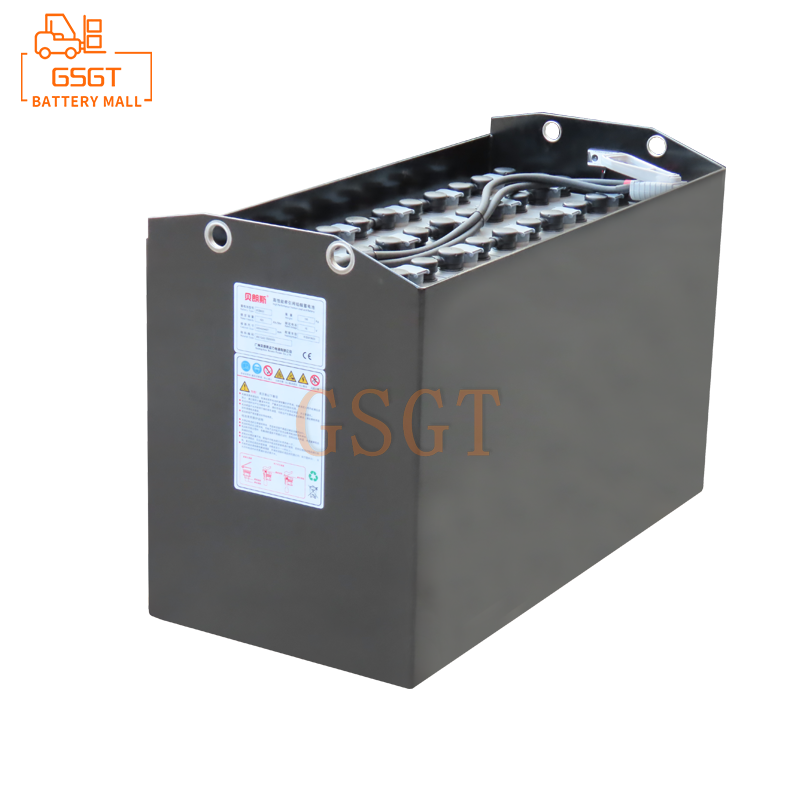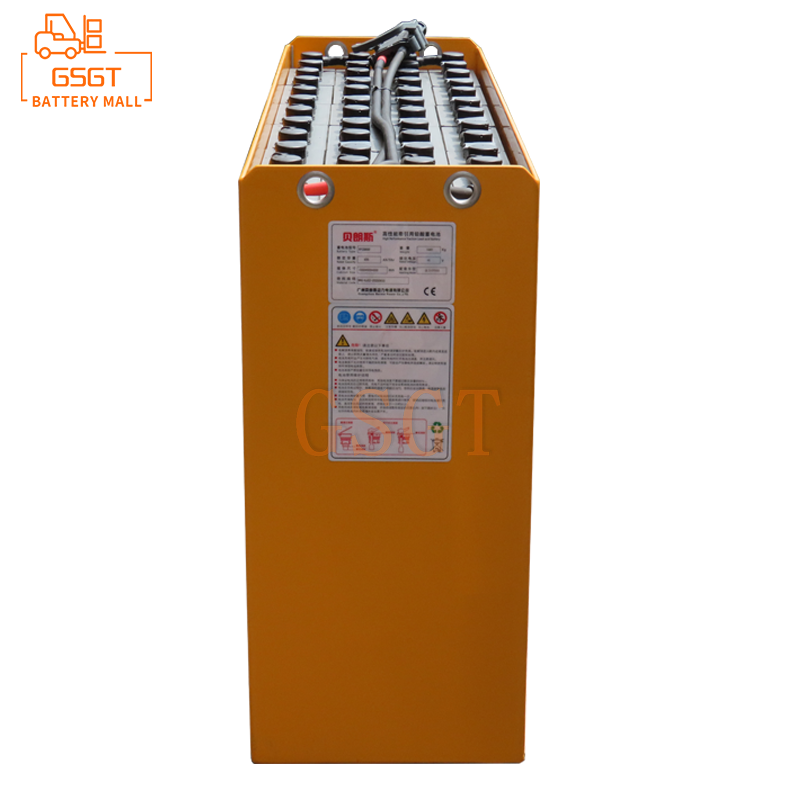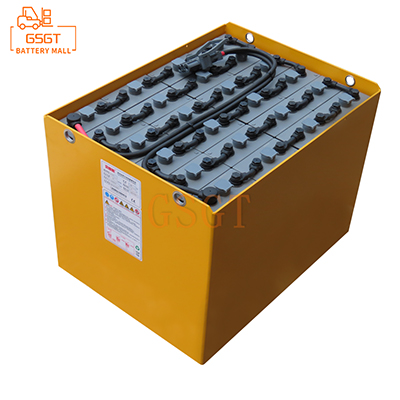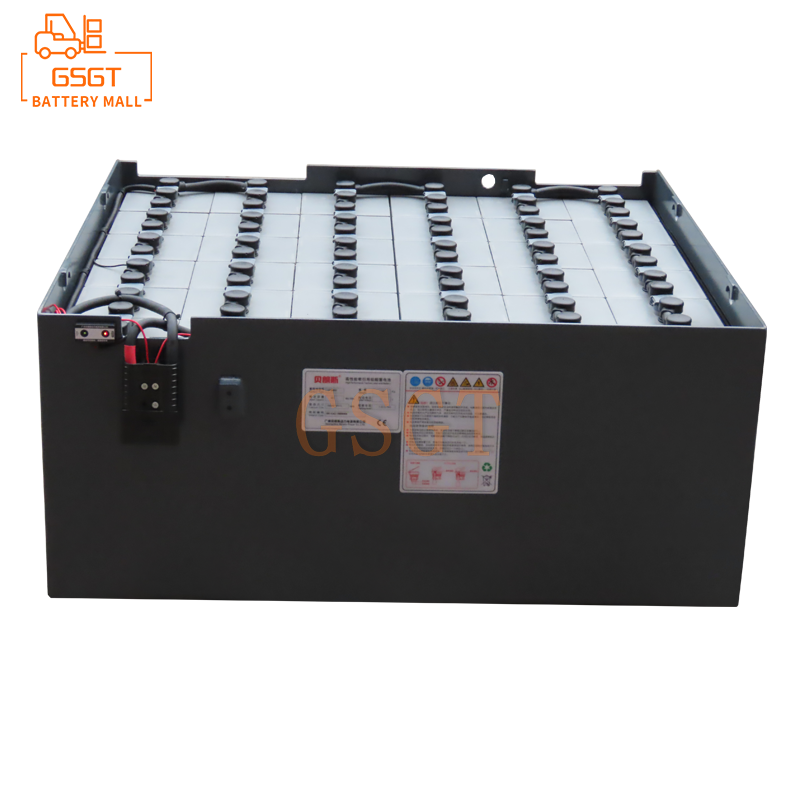Time:2025-04-22 10:16:56
Browse:609
Introduction
In the field of industrial logistics, forklifts, as important material handling equipment, the selection of their power sources is of vital importance. With the enhancement of environmental awareness and the development of technology, new energy batteries have gradually emerged and formed a competitive situation with traditional lead-acid batteries. However, after in-depth comparative analysis, it can be found that lead-acid batteries still have significant advantages in many aspects and occupy an irreplaceable position in the power application of forklifts.
1. Cost-benefit Comparison
(1) Procurement cost
The production technology of lead-acid batteries is mature and the raw materials are widely available, which makes their procurement cost relatively low. For enterprises with limited budgets, choosing lead-acid batteries as the power source for forklifts can save a significant amount of funds in the initial investment. In contrast, new energy batteries such as lithium-ion batteries, due to their complex technology, high production process requirements and persistently high raw material costs, often have a purchase price several times that of lead-acid batteries. This is undoubtedly a major obstacle for some small and medium-sized enterprises or those with extremely strict cost control requirements to adopt new energy batteries.
(2) Maintenance costs
The maintenance technology of lead-acid batteries has been developed for a long time and has become very mature. Relevant maintenance personnel are easily accessible, and the maintenance tools and equipment are relatively simple and low-cost. Common maintenance operations such as checking the electrolyte level and specific gravity, and adding distilled water can be handled by ordinary maintenance personnel after simple training. Moreover, when lead-acid batteries encounter some common faults, such as sulfation of the plates and shedding of active materials, the repair cost is relatively low. Some faults can even be repaired by the internal personnel of the enterprise themselves. The maintenance of new energy batteries requires professional technicians and specific detection equipment. In addition, new energy batteries are highly sensitive to environmental conditions such as temperature and humidity during use, and require additional environmental control equipment to ensure stable performance, which also increases maintenance costs.
(3) Service life cost
Although in terms of the number of single charge and discharge cycles, the cycle life of some new energy batteries, such as lithium-ion batteries, may be higher than that of lead-acid batteries. However, in actual forklift usage scenarios, the design of lead-acid batteries often meets the working intensity and usage frequency requirements of forklifts. Under normal circumstances, lead-acid batteries can operate stably for 3 to 5 years under reasonable use and maintenance conditions, which is suitable for the equipment update cycle of most enterprises. Moreover, due to the low procurement cost of lead-acid batteries, even if they are replaced at the end of their service life, the overall long-term usage cost remains controllable. In contrast, although new energy batteries have a long theoretical cycle life, in the actual operating environment of forklifts, their actual service life will be greatly reduced due to factors such as frequent heavy-load starts and long-term continuous operation. Moreover, due to its high procurement cost, once replacement is needed, it will bring a considerable economic burden to the enterprise. Taking into account the costs of procurement, maintenance and replacement comprehensively, the total cost advantage of lead-acid batteries is obvious throughout the entire service life of forklifts.
2. Performance Comparison
(1) Power Output
During the operation of forklifts, operations such as heavy-load starting, acceleration, and climbing slopes are often required, which places a high demand on the battery's instantaneous high-power output capacity. Lead-acid batteries have excellent high-current discharge characteristics, capable of providing a powerful current in a short period of time, meeting the power demands of forklifts under these working conditions, enabling forklifts to start quickly and run smoothly. For instance, when handling heavy goods, lead-acid batteries can quickly release energy, ensuring that forklifts can easily lift the goods and carry out the handling. Some new energy batteries, although they perform well in terms of energy density, are inferior to lead-acid batteries in terms of instantaneous power output. For instance, some lithium-ion batteries may experience a rapid voltage drop and insufficient output power when dealing with high current demands such as heavy-load starting of forklifts, resulting in slow starting and insufficient power of the forklift and affecting work efficiency.
(2) Low-temperature performance
For forklifts operating in low-temperature environments such as cold storage facilities and warehouses in cold regions, the low-temperature performance of the battery is particularly crucial. Although the capacity of lead-acid batteries will decline in low-temperature environments, they can still maintain a certain working capacity. After long-term practice and improvement, lead-acid batteries have enhanced their low-temperature adaptability to a certain extent by optimizing the electrolyte formula and plate materials, etc. In contrast, the performance of many new energy batteries drops sharply in low-temperature environments. Take lithium-ion batteries as an example. Under low-temperature conditions, the chemical reaction rate inside the battery slows down, and the migration speed of lithium ions slows down, resulting in an increase in the internal resistance of the battery, a significant reduction in capacity, and even the possibility of it failing to work properly. This means that forklifts operating in low-temperature environments, if they use new energy batteries, often require additional heating and insulation devices to maintain the normal working temperature of the batteries. This not only increases equipment costs and energy consumption but also reduces the reliability of the system.
(3) Stability
The working principle of lead-acid batteries is based on traditional chemical reactions. After more than a hundred years of development and improvement, their performance stability is extremely high. Under normal usage and maintenance conditions, the parameters such as the charging and discharging performance and capacity retention rate of lead-acid batteries fluctuate relatively little, which can provide continuous and stable power output for forklifts. In the daily high-intensity operations of forklifts, lead-acid batteries can always maintain a stable working state, and faults caused by unstable battery performance rarely occur. However, due to the relatively new technology of new energy batteries, although they are constantly developing and improving, there are still some problems in terms of stability. In addition, the performance of new energy batteries may vary significantly under different working environments and usage conditions, which also increases the uncertainty of forklift operation.
3. Comparison of Safety Performance
(1) Risk of thermal runaway
During normal use, lead-acid batteries generate relatively less heat and have a more mature heat dissipation mechanism. Even under conditions such as high current discharge or prolonged charging, as long as maintenance and usage are carried out in accordance with the operating procedures, the risk of thermal runaway is extremely low. New energy batteries, especially lithium-ion batteries, will undergo intense chemical reactions inside the battery under certain abnormal conditions, such as overcharging, overdischarging, short circuits or being affected by high temperatures, generating a large amount of heat and thus causing thermal runaway. Once thermal runaway occurs, it may cause battery fires or even explosions, posing a serious threat to the safety of personnel and equipment. In the actual usage scenarios of forklifts, due to the complex working environment, batteries may be subjected to external forces such as collisions and compressions, which further increases the risk of thermal runaway for new energy batteries.
(2) Risk of electrolyte leakage
Although lead-acid batteries use sulfuric acid electrolyte, which is somewhat corrosive, the problem of electrolyte leakage has been fully considered in their design. Battery casings are usually made of high-strength and corrosion-resistant materials and have good sealing performance. During normal use, as long as no serious collision or damage occurs, the probability of electrolyte leakage is very low. Even if there is a small amount of electrolyte leakage, due to its relatively weak corrosiveness and ease of detection and handling, it generally will not cause serious harm to the environment and equipment. Some new energy batteries, such as lithium-ion batteries that use organic electrolytes, once they leak, the organic electrolytes have the characteristics of being flammable and explosive. This not only causes environmental pollution but may also lead to safety accidents such as fires. Moreover, due to the strong volatility of organic electrolytes, leakage is not easily detectable, increasing potential safety hazards.
(3) Gas Emission risks
During the charging process of lead-acid batteries, a small amount of hydrogen and oxygen are produced. However, as long as the charging operation is carried out in a well-ventilated environment, these gases can be discharged in time and will not accumulate locally to pose an explosion risk. Moreover, by reasonably controlling the charging parameters and adopting advanced charging technologies, such as intelligent charging and pulse charging, the generation of gas can be further reduced. In contrast, some new energy batteries may produce other harmful gases during the charging and discharging process.
4. Comparison of Environmental Adaptability
(1) Temperature adaptability
In addition to the low-temperature performance mentioned earlier, lead-acid batteries also have good adaptability in high-temperature environments. The operating temperature range of lead-acid batteries is relatively wide, and they can generally work normally between -20 ℃ and 50℃. In high-temperature environments, although its capacity will decline, through reasonable heat dissipation measures, such as adding ventilation equipment and installing heat sinks, the battery temperature can be effectively reduced to ensure its normal operation. However, new energy batteries face greater challenges in high-temperature environments.
(2) Humidity adaptability
In some working environments with high humidity, such as ports, docks, vegetable and fruit markets and other places, forklift batteries need to have good humidity adaptability. The casing and internal structure of lead-acid batteries have been specially designed, featuring excellent waterproof and moisture-proof performance. Even in a high-humidity environment, as long as the battery casing is not damaged, the electrolyte will not experience a decline in performance due to moisture absorption. Moreover, the chemical reactions inside lead-acid batteries are relatively stable and are not significantly affected by changes in humidity. However, new energy batteries are relatively sensitive to humidity.
(3) Adaptability to harsh environments such as dust
In some factory workshops, mines and other places, there are a large amount of pollutants such as dust and particulate matter. Forklift batteries need to work in such harsh environments. The structure of lead-acid batteries is relatively simple, and their shells are sturdy. They can effectively prevent dust and other pollutants from entering the battery interior, avoiding damage to the battery's electrodes and electrolyte. Even if a certain amount of dust adheres to the battery surface, it can be cleaned through simple cleaning measures and will not affect the normal operation of the battery. However, new energy batteries, especially those with complex sealing structures and precise electronic components, are prone to damage in harsh environments such as dust. Dust may clog the heat dissipation holes and ventilation outlets of the battery, affecting its heat dissipation effect and causing the battery temperature to rise. Moreover, the particles in the dust may also wear down the battery's casing and sealing areas, damage the battery's sealing performance, and allow moisture, harmful gases, etc. to enter the battery interior, affecting the battery's performance and lifespan.
5. Comparison of Recycling and Utilization
(1) Maturity of recycling technology
The recycling technology of lead-acid batteries has become very mature. After years of development, a complete recycling system has been formed. During the recycling process of lead-acid batteries, valuable components such as lead and sulfuric acid can be effectively separated and extracted through physical and chemical methods and reused. The recycled lead can be reused in the production of lead-acid batteries, achieving the recycling of resources and reducing the reliance on primary lead mines. However, due to the wide variety of new energy batteries, the chemical composition and structure of different types of batteries vary greatly, which leads to the fact that their recycling technology is still in the stage of continuous exploration and improvement.
(2) Recovery Costs and Benefits
The recycling cost of lead-acid batteries is relatively low because their recycling technology is mature and the recycling equipment and process are relatively simple. Moreover, the valuable components such as lead obtained through recycling have a relatively high market value, and good economic benefits can be generated through recycling and reuse. This makes the recycling of lead-acid batteries highly proactive and feasible. In contrast, the recycling cost of new energy batteries is relatively high. On the one hand, the complexity of recycling technology and the high requirements of equipment increase the recycling cost; On the other hand, the current market for the recycling of new energy batteries is not yet fully mature. The market prices of valuable components such as rare metals obtained through recycling fluctuate greatly, and the economic benefits of recycling enterprises are unstable. To a certain extent, this has affected the enthusiasm and sustainability of the recycling of new energy batteries.
(3) Environmental Protection Significance
The effective recycling and utilization of lead-acid batteries not only can achieve the circular utilization of resources and reduce production costs, but also can reduce the pollution of heavy metals such as lead to the environment. Through standardized recycling and processing, the random discharge of harmful substances such as lead and sulfuric acid from used lead-acid batteries can be avoided, which could cause pollution to soil, water sources, etc. Although new energy batteries are relatively environmentally friendly during use, if used batteries are not properly recycled and treated, the heavy metals such as lithium, cobalt and nickel they contain, as well as organic electrolytes, will also cause serious pollution to the environment. Moreover, as the mining and refining processes of some rare metals in new energy batteries themselves have a significant impact on the environment, enhancing their recycling and utilization is of great significance for reducing resource waste and environmental pollution. From this perspective, a mature recycling system for lead-acid batteries is more conducive to achieving environmental protection goals at the current stage.
In conclusion, despite the continuous technological innovation and development of new energy batteries, forklift lead-acid batteries still hold an important position in the forklift power field due to their comprehensive advantages in cost-effectiveness, performance, safety, environmental adaptability, and recycling. They are an excellent choice that enterprises cannot ignore when selecting forklift power sources.

$2450

$3810

$3405

$4045

MESSAGE
Professional And Efficient
Security
Affordable Price
Professional Services